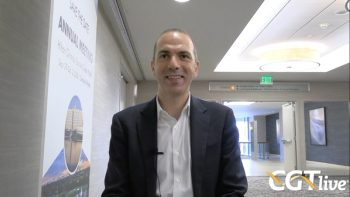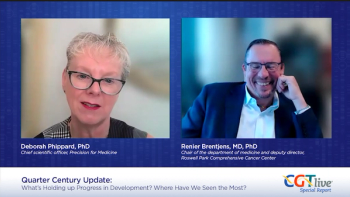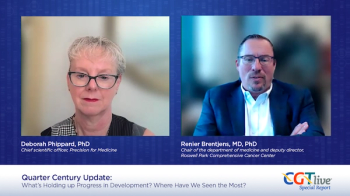
New Gene Therapy Product ARU-1801 Shows Durable, Safe Sickle Cell Effect
The second process of ARU-1801 in a new patient resulted in up to 4 times greater engraftment of transduced hematopoietic stem cells and progenitors at 6 months.
A modified gene therapy, with reduced intensity conditioning (RIC), may provide durable and safe treatment of sickle cell disease.
New phase 1/2 data involving 3 patients with varying and severe forms of sickle cell disease, presented at the
ARU-1801 consists of autologous CD34+ hematopoietic stem cells and progenitors, transduced with a lentiviral vector encoding a modified γ-globinG16D gene.
The data, presented by investigators from Cincinnati Children’s Hospital Medical Center, complement earlier mice model findings that a highly potent anti-sickling globin would result in greater ARU-1801 efficacy with RIC. As investigators, led by Michael Grimley, MD, noted, g-globinG16D LV produces up to twice as many more fetal hemoglobin (HbF)/vector copy number (VCN) than g-globin LV.
“We hypothesized a high potency anti-sickling globin would allow ARU-1801 to be effective with RIC,” they explained. “RIC would result in lower toxicities and resource utilization compared to myeloablative approaches, allowing access of gene therapy to a broader group of SCD patients.”
The new ASH 2020 data predates outcomes for 2 of the 3 patients observed in the ongoing assessment, who were treated with drug product from the initial ARU-1801 manufacturing process. These new findings are long-term for the first 2 patients, as well as early data with the third, with the new manufacturing process.
Eligible patients were adults with severe sickle cell disease, as per recurrent vaso-occlusive events (VOE) and acute chest syndrome. Prior to drug product infusion, all patients received single-dose intravenous melphalan 140 mg/m2, and were weaned off transfusions 3-6 months post-product infusion.
Safety, engraftment, VCN, anti-sickling Hb expression, and hematological and clinical manifestations of disease were assessed by investigators.
The findings, as of July 28 of this year, show 30-month follow-up among patients 1 and 2. To date, ARU-1801 has demonstrated a favorable safety profile and has not been associated with any treatment-related adverse events. Time to neutrophil engraftment was 9, 7, and 7 days, and time to platelet recovery was 12, 7, and 6 days post-transfusion among patients, respectively.
With the second process of ARU-1801, patient 3 demonstrated an engrafted VCN of 0.74.
“As P3 is being weaned off transfusions, HbFG16D is progressively rising, showing the selective advantage to HbFG16D-containing RBCs,” Investigators wrote. “(Patients 1 and 2) have maintained improvements in VOEs, no VOE in P3 so far (data will be presented).”
Investigators concluded that the presence of greater HbFG16D may induce preventive sickling or ineffective erythropoiesis. The second process of ARU-1801 in patient 3 resulted in up to 4 times greater engraftment of transduced hematopoietic stem cells and progenitors at 6 months.
The findings are indicative of a possibly bettered gene therapy approach for sickle cell.
“Additional process enhancements are under development for future treated patients,” investigators wrote. “ARU-1801, administered with RIC, holds significant promise for achieving durable responses with a favorable safety profile in patients with severe SCD.”
The study, “
Newsletter
Stay at the forefront of cutting-edge science with CGT—your direct line to expert insights, breakthrough data, and real-time coverage of the latest advancements in cell and gene therapy.











































